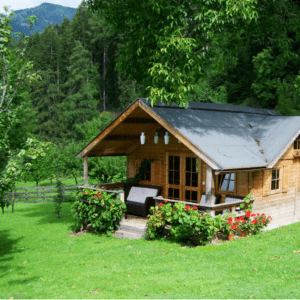The combination of population spread, poor forest management practices, and other factors have made wildfires more destructive and challenging to control. In recent years, wildfires have burned over larger areas and destroyed more homes, businesses, and infrastructure than ev
In the past, the fire protection class (distance to the fire department, equipment, and water supply was the predominant factor in determining insurance premiums. As technology advances and the insurance industry changes, the use of wildfire scores is playing a bigger role in insurance premiums and eligibility.
A wildfire score is a tool used by insurance companies to assess the risk and potential of wildfire in a specific area. The score is typically based on various factors, such as the proximity of the property to fire-prone areas, vegetation type, and weather patterns. The score helps insurers determine the likelihood of a property being damaged or destroyed by a wildfire and is used to set insurance premiums and underwrite policies. The higher the wildfire score, the higher the risk, and therefore the higher the premium.
Understanding your property’s wildfire score is important because it can help you take steps to reduce the risk of wildfire damage, potentially lower your insurance premiums, or even remain eligible for coverage. Several factors go into calculating a wildfire score. These factors can vary depending on the insurance company or the region, but some of the most common ones include:
- Fuel type: The type and density of vegetation in the area can significantly impact the risk of wildfire. Areas with a high concentration of dry grass, trees, or shrubs are more susceptible to wildfires.
- Slope of the land: The slope of the land can affect the intensity and speed of a wildfire, as fires tend to spread more quickly uphill.
- Weather patterns: The likelihood of a wildfire is higher during hot, dry, and windy conditions. Areas that experience frequent periods of drought or high winds are at a higher risk of wildfires.
- Proximity to fire-prone areas: Properties located near areas with a history of wildfires, such as national forests, are at a higher risk of wildfire.
- Access to the property: The accessibility of a property to emergency services, such as fire departments, can impact the ability to respond to a wildfire and mitigate its damage.
- Previous fire history: Areas with a history of wildfires are at a higher risk of future fires, and the frequency and severity of past fires can impact the wildfire score.
- Construction materials and design: The type of construction materials used in a property, such as wood or metal, and the design of the property, such as the presence of a roof made of flammable materials, can affect the risk of wildfire damage.
A property’s wildfire score can change over time based on the factors we discussed earlier. Although a property owner can not dictate the wildfire score, they can assist in reducing the wildfire exposure of the property. Although every carrier is different, some carriers may consider these efforts when determining insurance rates and overall insurability.
Unfortunately, wildfire scoring will not be going away. We expect that both homeowners and commercial property owners will continue to see the results of scoring impact rates and eligibility of properties prone to wildfire. The insurance market will most likely see tighter restrictions, fewer carriers participating in these markets, and increases in premiums in the months to come.

